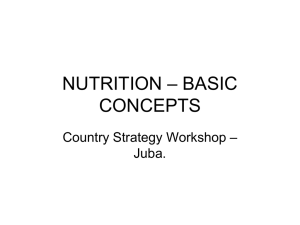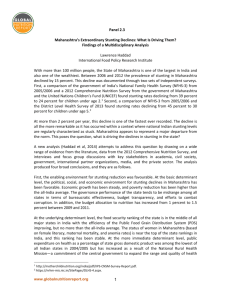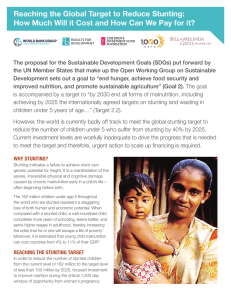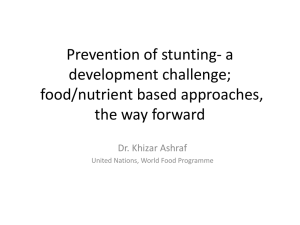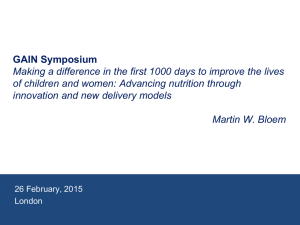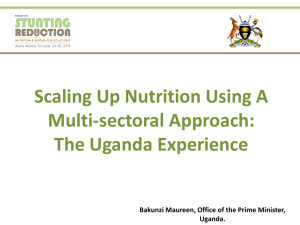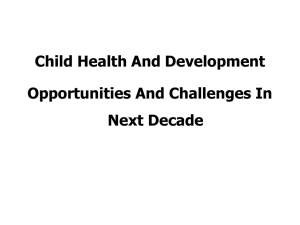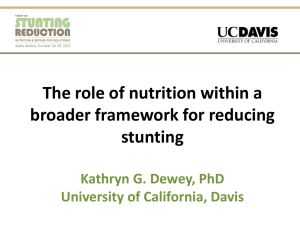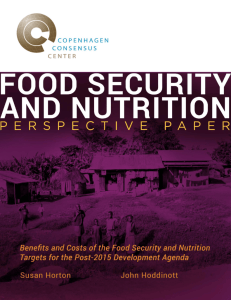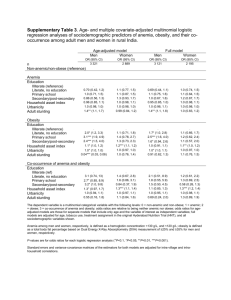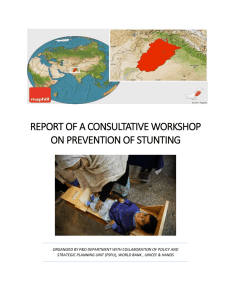UNICEF Executive Director, Anthony Lake Keynote Speech 126th
advertisement
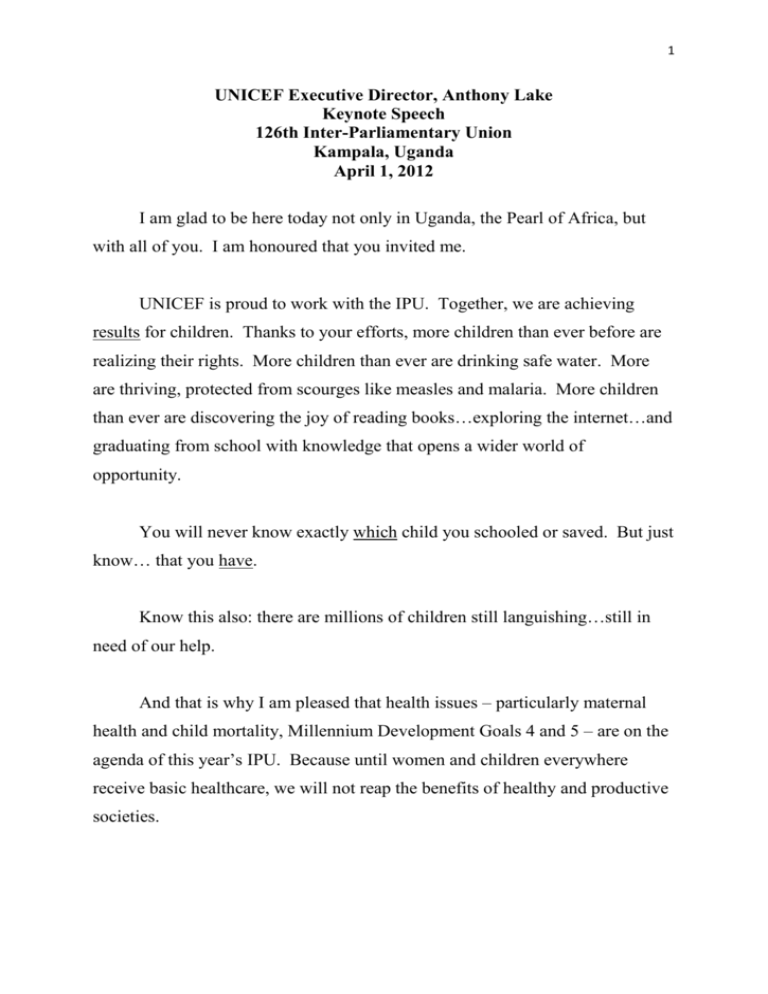
1 UNICEF Executive Director, Anthony Lake Keynote Speech 126th Inter-Parliamentary Union Kampala, Uganda April 1, 2012 I am glad to be here today not only in Uganda, the Pearl of Africa, but with all of you. I am honoured that you invited me. UNICEF is proud to work with the IPU. Together, we are achieving results for children. Thanks to your efforts, more children than ever before are realizing their rights. More children than ever are drinking safe water. More are thriving, protected from scourges like measles and malaria. More children than ever are discovering the joy of reading books…exploring the internet…and graduating from school with knowledge that opens a wider world of opportunity. You will never know exactly which child you schooled or saved. But just know… that you have. Know this also: there are millions of children still languishing…still in need of our help. And that is why I am pleased that health issues – particularly maternal health and child mortality, Millennium Development Goals 4 and 5 – are on the agenda of this year’s IPU. Because until women and children everywhere receive basic healthcare, we will not reap the benefits of healthy and productive societies. 2 To that end, I would like to talk about one such health issue. A silent health emergency. It’s one on which, I know, some of you are already working…but many of you are not. And if you’re not, I hope I can persuade you to make it a priority. What I’m going to talk about is, perhaps, the most under-reported… under-prioritised…under-estimated…and least understood issue in development today. It is also one of the greatest opportunities we have to help children – and nations – reach their potential. I am talking about stunting – one of the greatest human inequities and social injustices of our time. If you haven’t heard of stunting, you’re not alone. When I mentioned it at a meeting of hundreds of medical experts last year, I could see a large number of puzzled faces in the audience. To my astonishment, less than half the audience, in a show of hands, had even heard of stunting. If you google stunting, five out of the first ten entries refer to cheerleading stunts…tricks on pocket bikes... motorbike racing… and acrobatics. Only half refer to this devastating and entirely preventable condition. Preventable at relatively little cost. So, I am grateful for this opportunity to urge that when all of you return home to your constituents and your governments, you advocate for measures to combat the effects of under-nutrition. For you – collectively and individually – can make a great difference. 3 Stunting is the outcome of chronic deficiency in nutrition during the first 1000 days of a child’s life – from conception, through pregnancy, to the age of two. The damage it causes to a child’s development is irreversible. Irreversible. A stunted five-year old is inches shorter than he or she could have been. But this is not simply an issue of height. Chronic malnutrition makes that child more vulnerable to disease. A stunted child is as much as five times more likely to die from diarrhoea than a non-stunted child. And, most important: a stunted child will never reach his or her full cognitive capacity …never be able to learn as much nor earn as much throughout life. Let me start by showing you a slide of brain cells in two children. One is from a healthy and well-nourished child. The other is from a substantially under-nourished and stunted child. I should add, at this point, that the Dr. in front of my name, a mere Ph.D., in no way qualifies me to analyse these pictures with anything more than rudimentary comments. But the pictures are so stark that you don’t need to be a medical expert to understand their gravity. SLIDE OF TWO BRAINS. During pregnancy and in the first two years of life, the brain develops and billions of brain cells grow and interconnect. Good nutrition during this critical ‘window of opportunity’ is crucial. The picture on the right shows a typical brain cell of an under-nourished and stunted child. This brain cell has fewer and shorter branches. The picture on the left shows a similar brain cell from a well- 4 nourished and non-stunted child. Note how the brain cells are connecting much, much better. These deficits in brain cell size and connectivity translate to a loss of between two to three years of learning. Later in life, when stunted children enter the work force, their diminished physical and cognitive development can reduce their earning capacity by as much as 22 per cent. What a dreadful affliction for any child. What a terrible tragedy for the 180 million children, under five years of age, who are stunted around the developing world today. Yes, 180 million. That is roughly equivalent to the combined populations of Uganda… and Malawi… and Tanzania… and Ethiopia. If these children were concentrated in one region, it would be seen as the emergency it is. It would keep capturing our headlines until we succeeded in addressing it. I can’t think of any greater inequity than condemning children, while in the womb, to a loss of their ability -- of their right -- to live fully…to learn fully…and to realize their potential. The hard fact is that dozens of countries face extremely high percentages of stunting… 30 per cent…40 per cent in some cases. In six countries, over 50 per cent suffer from this condition. 5 And let me emphasise, the burden of under-nutrition does not only fall to poor countries. It falls to Middle Income Countries as well. Thus, it is crucial that we not equate food security with nutrition security. Stunting can happen in food-secure households and in food-secure countries. To its credit, India is a food-secure country. Yet, nearly half of all children in India under the age of five are stunted. Stunting is so common that, in some places, it is mistaken for genetic heritage rather than the preventable condition we know it to be. Without urgent interventions, the human tragedy behind these statistics will endure. Stunted women are more likely to give birth to stunted children… condemning their children to the plight of their mothers…tightening the noose of intergenerational poverty. So, this is an affliction not only of the children – but for their societies. Just as the human costs of stunting are high, so too are the economic costs. These children are not only our citizens… our families…and our communities. They are our future workforces. They must be the power behind our economies. And, as an aside, as we discuss stunting, we must not ignore undernutrition and its costs to our sons and daughters, and to our societies. The World Bank estimates that countries blighted by under-nutrition lose at least two to three per cent of their gross domestic product…as well as billions of dollars in salaried employment and avoidable health care spending. 6 Combatting stunting is one of the most cost-effective investments a country can make. The science is clear and the returns are high. It is time to recognize nutritional status not only as a marker of progress in development, but also as a maker of progress – and a key to more sustainable development. Governments must invest now in programmes to prevent stunting or risk diminishing the impact of other investments in education, health, and child protection. Investing in pro-nutrition policies stabilises countries. It helps them to become more resilient when they face man-made problems, or natural disasters. The day after tomorrow, I will be going to Chad where another nutritional crisis is unfolding. Today, in western Chad, malnourished children are already dying. And UNICEF predicts that over a million -- and it could reach up to 1.5 million -children under five are at risk in the Sahel today… vulnerable to the ravages of disease and life-threatening severe acute malnutrition. As we address the longer term issues of stunting and under-nutrition, let us not forget the urgent necessity of reaching these children in desperate need of help. There and around the world, if ever there was a time to invest in child nutrition…invest in the health of our nations… build resilience…and reap the financial dividends, it is now. As the current economic crisis bites, we must be ever more careful with precious resources, and all the more accountable to those who give them. More than ever, donor countries, quite rightly, are insisting on value for money. Programme countries are trying to do more with less. And agencies like 7 UNICEF, as always, have to demonstrate cost-effectiveness and results -- not only out of obligation to our partners and our donors but, above all, out of dedication to the children. Preventing stunting is relatively easy and inexpensive. All it takes is micronutrients such as vitamin A…zinc…iron supplements…and iodized salt. As well as community nutrition programmes, like breast-feeding and good child feeding practices. And the price of preventing stunting in the first 1000 days of life? By our estimate, between US$15-US$20 per child. US$15-US$20. Is that an investment you can afford not to make? In 2008, eight of the world’s leading economists, including five Nobel Laureates, in the so-called Copenhagen Consensus, recommended priorities for confronting the top ten global challenges. They ranked providing young children with micronutrients the number one most cost-effective way to advance global welfare. Slowly, this message is resonating. Around the developing world, there has been a decrease in stunting…from 40 per cent in 1990 to 29 per cent in 2008. It is too late to protect the 180 million children currently blighted by stunting. But if we act right now, we can safeguard the futures of millions of children, yet to be born. 8 It is for them, and many millions of children suffering from all forms of malnourishment, that the SUN must rise – and is rising. Established in September 2010, the Scaling Up Nutrition movement -otherwise known as SUN -- brings together a coalition of partners: governments… NGOs…the private sector… academia…and UN agencies to focus greater attention on under-nutrition. And let me emphasise the word, ‘movement’. SUN is propelled by its own momentum…by the enthusiasm of its members. Not by a top-down bureaucracy. SUN helps governments invest in policies and programmes to reduce hunger and under-nutrition. It coordinates and improves support for countries that want to scale up programmes to combat under-nutrition. Already, in just 18 months, leaders in 27 countries have signed up to SUN. We call them “Early Risers” -- countries that committed rapidly after SUN began. They are already taking steps to alleviate under-nutrition…and making good progress. As parliamentarians, you are in a unique position to advocate for nutrition policies…to influence pro-nutrition legislation…to increase budget allocations for nutrition programmes…and to hold governments and partners accountable. If I have persuaded you, today, I hope you will go home and persuade your governments to join SUN…and add ever greater momentum to our movement. You can find out more on the SUN website: www.scalingupnutrition.org or from my friend, David Nabarro, who is the Secretary General’s Special 9 Representative for Food Security and Nutrition, and the Coordinator for the SUN movement. UNICEF is proud to be a part of the SUN movement. Combatting undernutrition and stunting is at the heart of UNICEF’s mandate to reach the most disadvantaged and marginalized. In closing, let me remind you of the promise we made to the world’s children back in 2000. Eight promises: the eight Millennium Development Goals. We promised them that if they gave us 15 years, we would give them a life closer to our dream of a world free from poverty, hunger, ignorance…injustice. There is simply nothing more unjust, nor more cruel, than condemning a child, in the womb, to a life of deprivation – especially when we know how to prevent it. Stunting is a critical global challenge. I hope I have convinced you that it is also a huge global opportunity. For how often can simple, cost-effective measures reap such riches…for our children…for our communities… for the future of our nations? Let’s join forces to bring stunting out of the shadows…and let the SUN rise for children everywhere.
